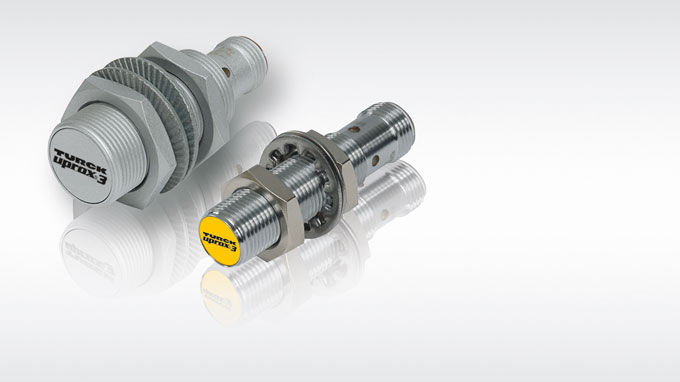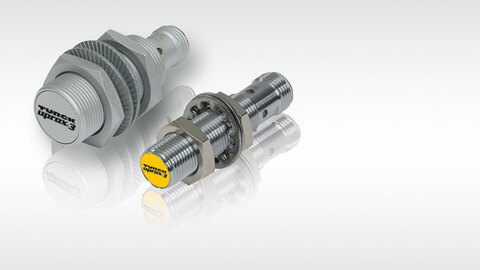

The factor 1 sensor with the highest switching distances is now also available as an IO-Link version
IO-Link-Capable uprox3 Sensors
20/15 – IO-Link makes Turck's uprox3 inductive proximity switch into a universal switch – including identification
Turck is now offering its flagship uprox3 sensor also in an IO-Link-capable version. The intelligent interface makes the factor 1 inductive proximity switch a universal sensor that can be parameterized to suit over 100,000 individual requirements. For example, the two separately adjustable switching distances (each either NC or NO, as well as PNP or NPN) enable early warning functions to be set for targets subject to wear. The user can thus take action already before a failure occurs. Various timer functions can also be set, for example an off-delay for speed monitoring. These options are already possible in I/O mode, in which the sensor can be operated on a conventional digital input.
In IO-Link mode, the sensor is operated on an IO-Link master. This enables access to all parameter and evaluation functions. The intelligent data retention with IO-Link 1.1 allows a sensor to be exchanged without having to reset parameters. Already in the process data uprox3-IOL provides further analysis options such as application-specific switch points, temperature limits or an identification number. These can be used to identify 256 different nodes. The presence control of workpiece carriers or change tools and their simultaneous identification can thus be implemented with a single sensor.
Turck is initially offering four variants of uprox3 IO-Link: an M12 variant with a switching distance of up to 6 mm, an M18 variant with a switching distance of up to 10 mm – both in a chrome brass housing, as well as PTFE-coated variants for welding applications.
Turck is now offering its flagship uprox3 sensor also in an IO-Link-capable version. The intelligent interface makes the factor 1 inductive proximity switch a universal sensor that can be parameterized to suit over 100,000 individual requirements. For example, the two separately adjustable switching distances (each either NC or NO, as well as PNP or NPN) enable early warning functions to be set for targets subject to wear. The user can thus take action already before a failure occurs. Various timer functions can also be set, for example an off-delay for speed monitoring. These options are already possible in I/O mode, in which the sensor can be operated on a conventional digital input.
In IO-Link mode, the sensor is operated on an IO-Link master. This enables access to all parameter and evaluation functions. The intelligent data retention with IO-Link 1.1 allows a sensor to be exchanged without having to reset parameters. Already in the process data uprox3-IOL provides further analysis options such as application-specific switch points, temperature limits or an identification number. These can be used to identify 256 different nodes. The presence control of workpiece carriers or change tools and their simultaneous identification can thus be implemented with a single sensor.
Turck is initially offering four variants of uprox3 IO-Link: an M12 variant with a switching distance of up to 6 mm, an M18 variant with a switching distance of up to 10 mm – both in a chrome brass housing, as well as PTFE-coated variants for welding applications.

